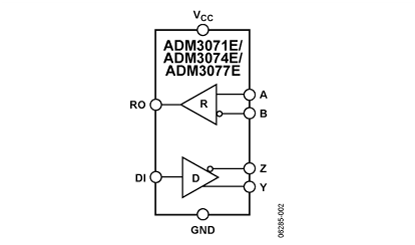ADM3077E: Features: ·TIA/EIA RS-485/RS-422 compliant·±15 kV ESD protection on RS-485 input/output pins·Data ratesADM3070E/ADM3071E/ADM3072E: 250 kbpsADM3073E/ADM3074E/ADM3075E: 500 kbpsADM3076E/ADM3077E/ADM30...
floor Price/Ceiling Price
- Part Number:
- ADM3077E
- Supply Ability:
- 5000
Price Break
- Qty
- 1~5000
- Unit Price
- Negotiable
- Processing time
- 15 Days
SeekIC Buyer Protection PLUS - newly updated for 2013!
- Escrow Protection.
- Guaranteed refunds.
- Secure payments.
- Learn more >>
Month Sales
268 Transactions
Payment Methods
All payment methods are secure and covered by SeekIC Buyer Protection PLUS.

 ADM3077E Data Sheet
ADM3077E Data Sheet








